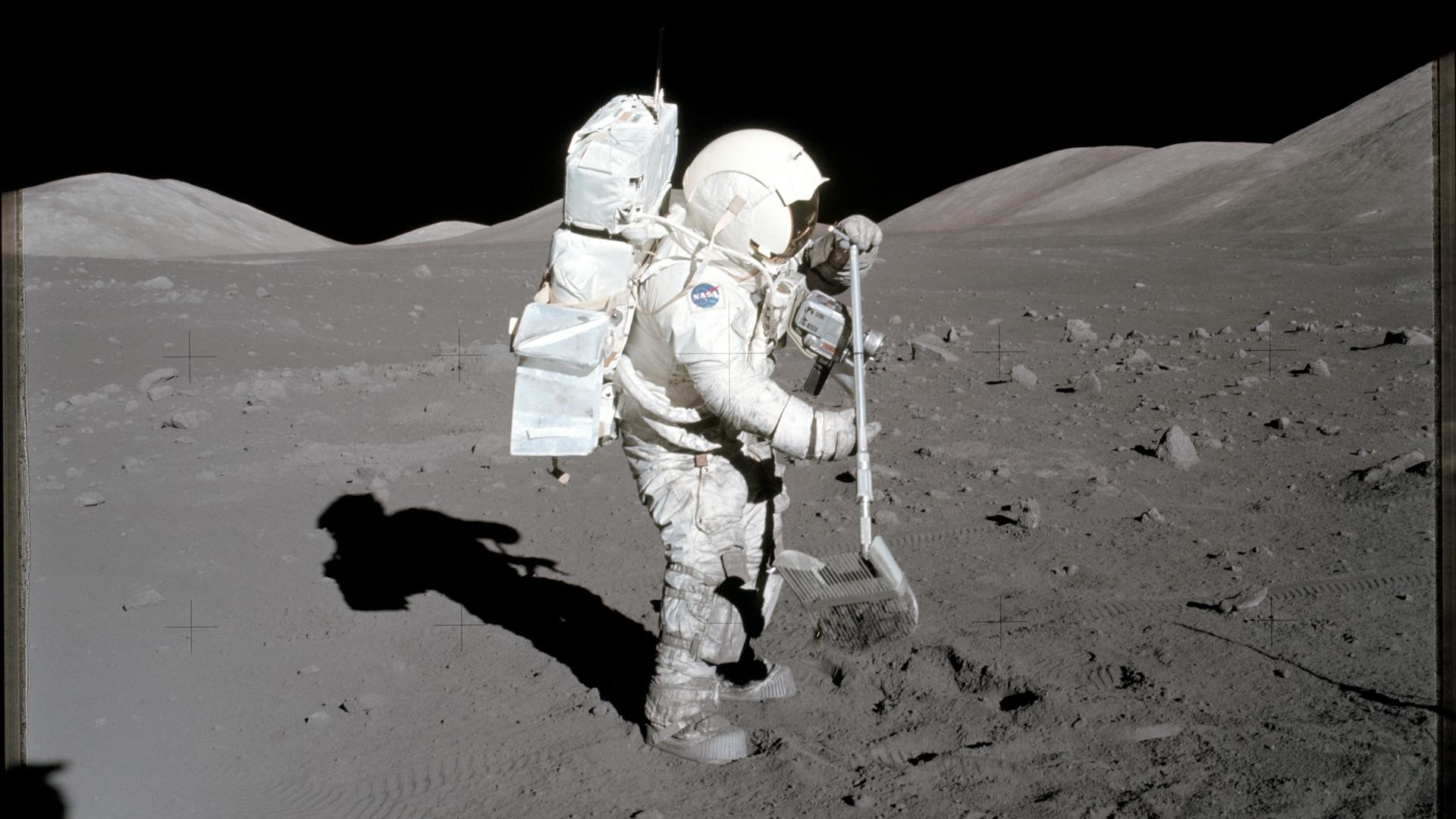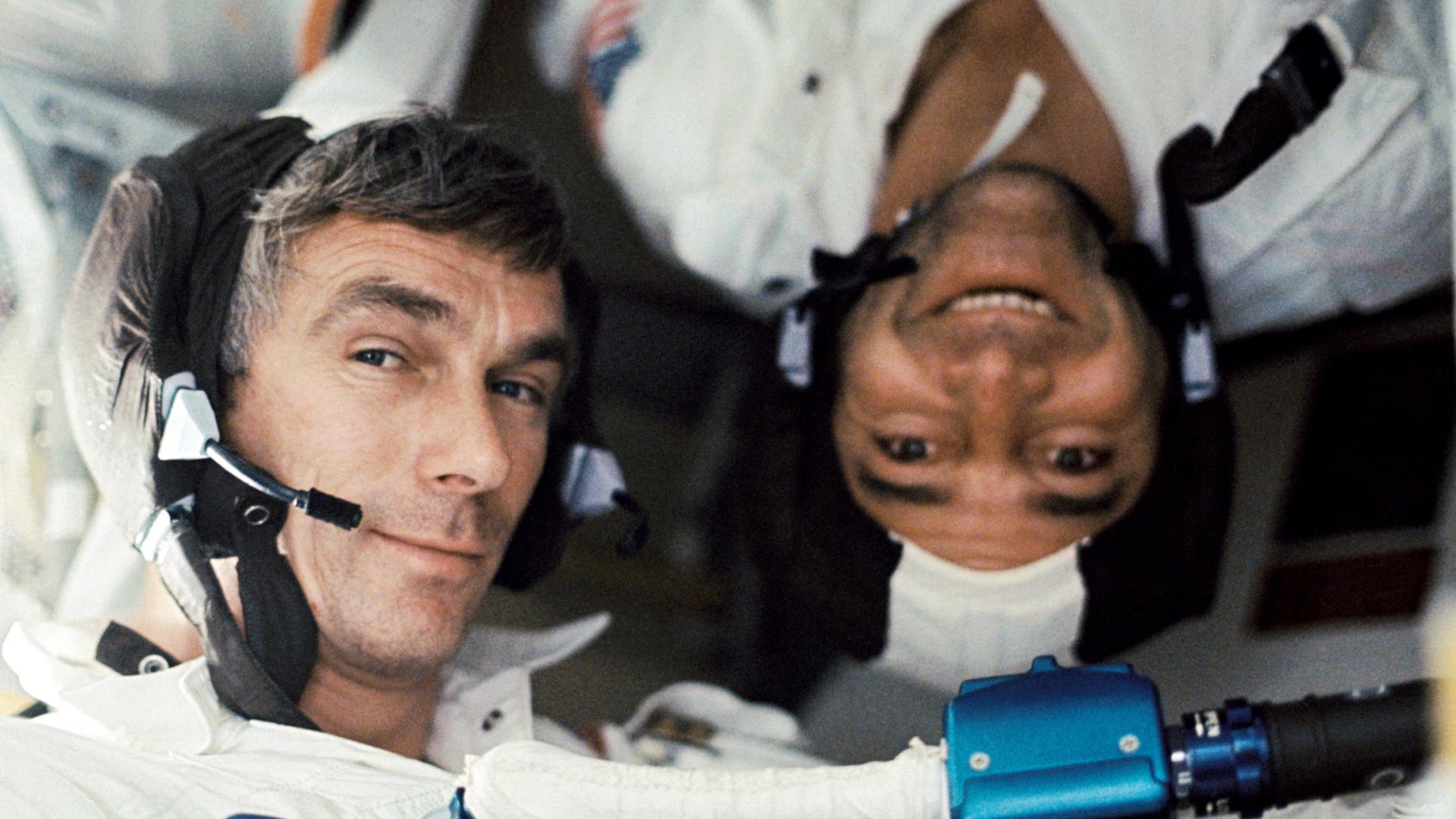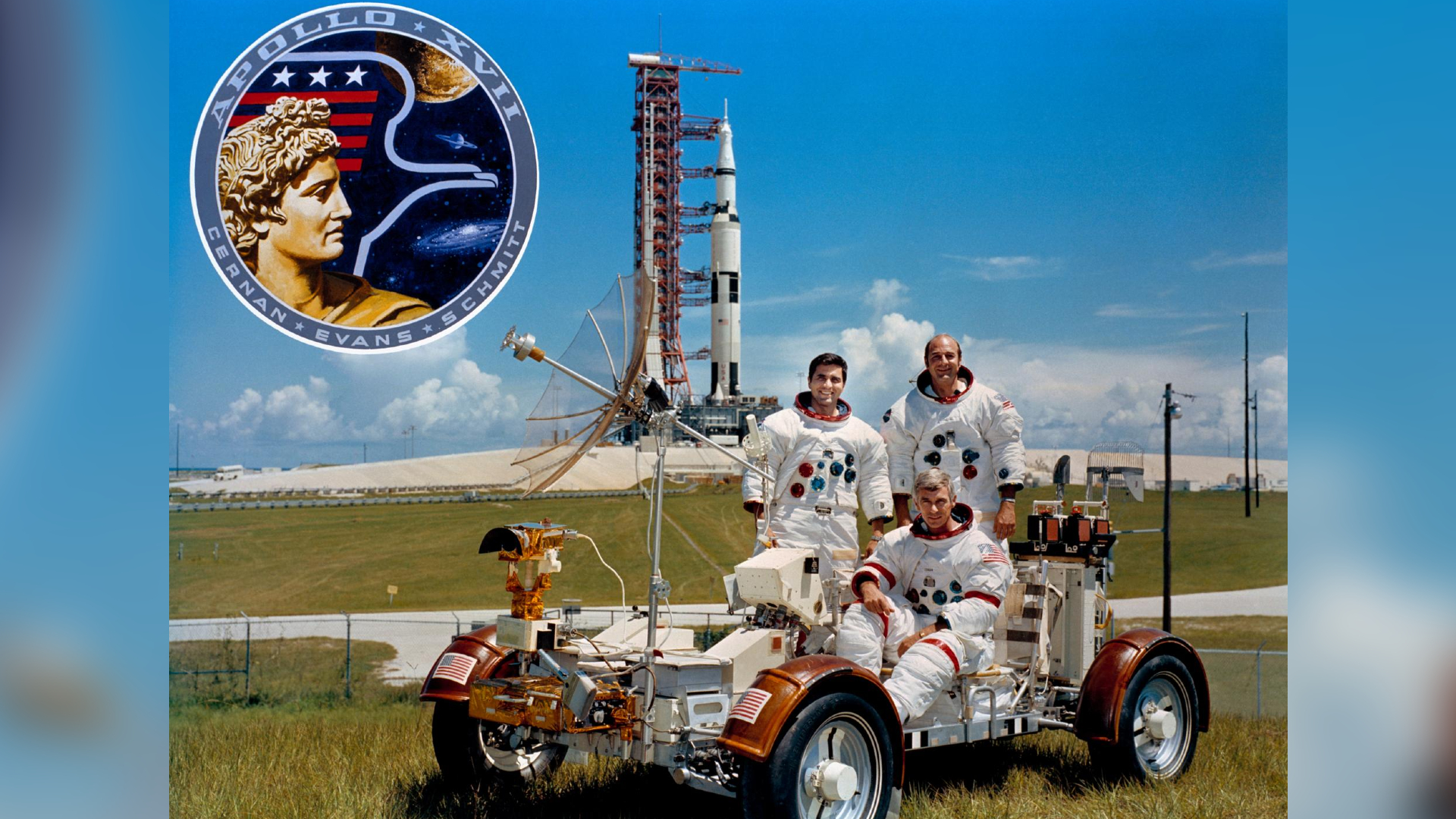Apollo 17: The final moon mission of the Apollo era
Apollo 17 was the first Apollo mission to include a scientist as part of the crew.

Apollo 17 took the 11th and 12th people to the surface of the moon and marked the end of the Apollo program. By the time the mission launched, on Dec. 7, 1972, public interest in space exploration had declined and the government had shifted focus to the Vietnam War. These and many other factors brought the program to a close, even though three more flights were originally planned.
Apollo 17 was the first mission to include a scientist in its crew. Geologist Harrison "Jack" Schmitt was one of the first six scientist-astronauts selected in 1965 amid immense pressure to do so from the National Academy of Sciences, which was worried that only test pilots would get the opportunity to walk on the moon.
When it came time to select the final crew, Schmitt was chosen over Joe Engle, who was a backup pilot for Apollo 14 and would have been next in the rotation to fly under ordinary conditions. The usual procedure was for an astronaut to back up a mission and then fly as prime astronaut on the third mission after his backup. Crewmates Ron Evans and Eugene Cernan were upset for Engle. However, they were pleased with the capabilities Schmitt, a geologic trainer for other moon-bound astronauts, showed on the job.
Related: Apollo 17: NASA's last Apollo moon landing mission in pictures
Evans, the command module pilot, was on his first mission to space. He was on combat duty in Vietnam in April 1966 when he found out he was selected as an astronaut. Evans had not only flown in combat but was also a combat pilot instructor.
Mission Cmdr. Cernan, a former U.S. Navy pilot, had faced many obstacles in space. On his first flight, Gemini 9 in 1966, he did a spacewalk that exhausted him because there weren't enough handholds to perform his work in microgravity. On his second flight, Apollo 10 in 1969, the lunar module briefly spun unpredictably as Cernan and crewmate Tom Stafford did a practice descent to the surface. He was a seasoned pilot and felt ready to command his crew on the most challenging Apollo mission yet.
Assessing and accessing the landing site
With the later Apollo missions so focused on science, and with a geologist on board for Apollo 17, much consideration went into choosing the lunar valley called Taurus-Littrow as Apollo 17's destination. The geologic variety of that valley tilted the decision to the location. Points of interest to scientists in Taurus-Littrow included Shorty Crater — believed to hold evidence of past volcanic vents — and several large boulders spotted in photographs taken by the Apollo 15 crew.
A minor technical error, due to a tank not being pressurized when expected, held up the launch by almost 3 hours. But once the error was fixed, the crew lifted off on Dec. 7, 1972. Cernan and Schmitt landed on the surface with the lunar module Challenger three days later without major incident, while Evans stayed in the command module, America.
Cernan's and Schmitt's first major challenge came when Cernan accidentally broke a wheel fender on their lunar rover. After that, abrasive moon dust showered the astronauts as they drove around the surface. Cernan made a partial repair with some duct tape, joking he would like a "mending award." The next day, he and Schmitt taped some maps in place of the fender to better fix the problem.
The astronauts also deployed several scientific instruments, most notably a traverse gravimeter. The astronauts carried the instrument on the rover and took it out to several sites to measure the relative gravity, which gave scientists an idea about the lunar substructure.
In lunar orbit, Evans made observations of the surface and kept mission control entertained by joking about how much he stank because he had not taken a shower in several days.

Orange soil and a memorable ending
As Cernan and Schmitt worked near the rim of Shorty Crater on the second day, Schmitt exclaimed that he could see orange soil. In Cernan's autobiography, he said he feared Schmitt "has been up here too long and has overdosed on rocks."
But when Cernan clambered over to take a look, he, saw the orange soil, too. Later examination of samples of that soil taken back to Earth showed that the rocks were tiny spheres of colored glass. These probably came from a volcanic vent.
After one more day of racing the clock to do all the science they could, the lunar crew packed their gear and prepared to climb into Challenger for the last time. Alone on the surface, Cernan gave a short speech, concluding, "I'd just like to record that America's challenge of today has forged man's destiny of tomorrow. ... Godspeed, the crew of Apollo 17."
Evans got a chance to do a quick spacewalk on the way back to Earth, retrieving some film canisters mounted outside America. The crew splashed down on Dec. 19 in the South Pacific Ocean.
Apollo 17's astronauts spent a record 22 hours performing extravehicular activities on the moon. The astronauts drove about 21 miles (34 kilometers) in the lunar rover and brought back 108 kilograms (238 lbs.) of lunar rocks.
Apollo 17 legacy

We celebrate the 50th anniversary of Apollo 17 this year (December 2022).
The command module America is located at Space Center Houston near the NASA Johnson Space Center, while the upper stage of the lunar module Challenger impacted the moon as planned.
While this crew was the last one so far to have visited the moon, NASA plans more lunar trips in the coming decade.
The Artemis program is a renaming of several earlier activities NASA was already undertaking to return humans to the moon. These were mandated by President Trump's Space Policy Directive 1, which tasked the agency with focusing on missions to the moon. In 2019, vice president Mike Pence set an ambitious deadline to land humans at the lunar south pole by 2024.
While all of the people who visited the moon so far were NASA astronauts, other entities could participate in the coming decades as well. One initiative in 2018, from private spaceflight company SpaceX, would send Japanese entrepreneur Yusaku Maezawa around the moon with a group of artists. SpaceX says it will do this in 2023, using the company's Big Falcon Rocket to transport the space tourists there and back.
Join our Space Forums to keep talking space on the latest missions, night sky and more! And if you have a news tip, correction or comment, let us know at: community@space.com.
Get the Space.com Newsletter
Breaking space news, the latest updates on rocket launches, skywatching events and more!

Elizabeth Howell (she/her), Ph.D., was a staff writer in the spaceflight channel between 2022 and 2024 specializing in Canadian space news. She was contributing writer for Space.com for 10 years from 2012 to 2024. Elizabeth's reporting includes multiple exclusives with the White House, leading world coverage about a lost-and-found space tomato on the International Space Station, witnessing five human spaceflight launches on two continents, flying parabolic, working inside a spacesuit, and participating in a simulated Mars mission. Her latest book, "Why Am I Taller?" (ECW Press, 2022) is co-written with astronaut Dave Williams.










